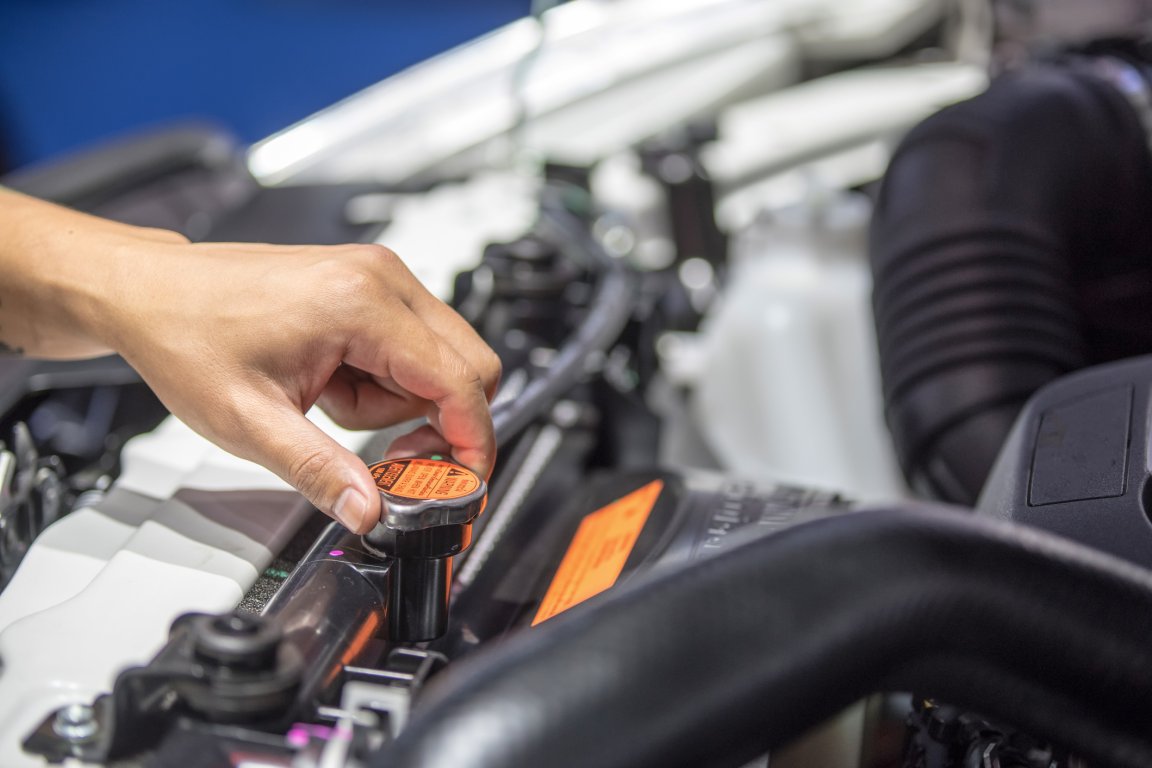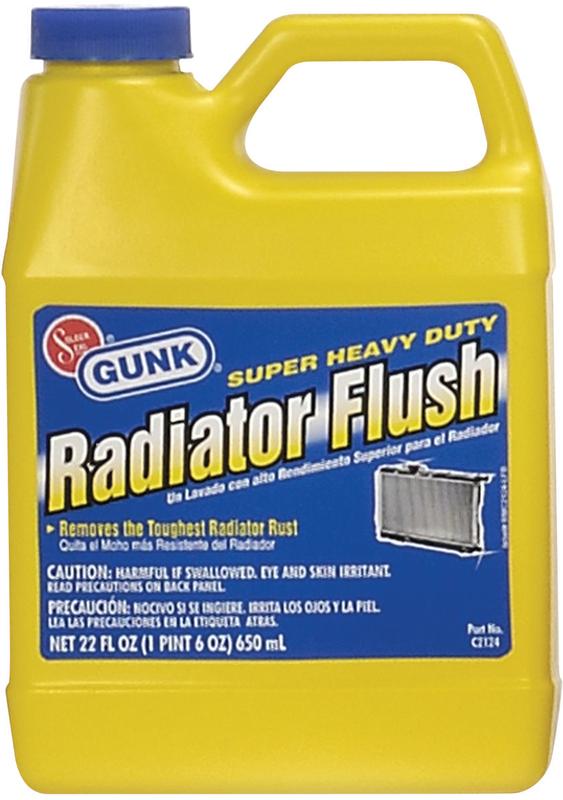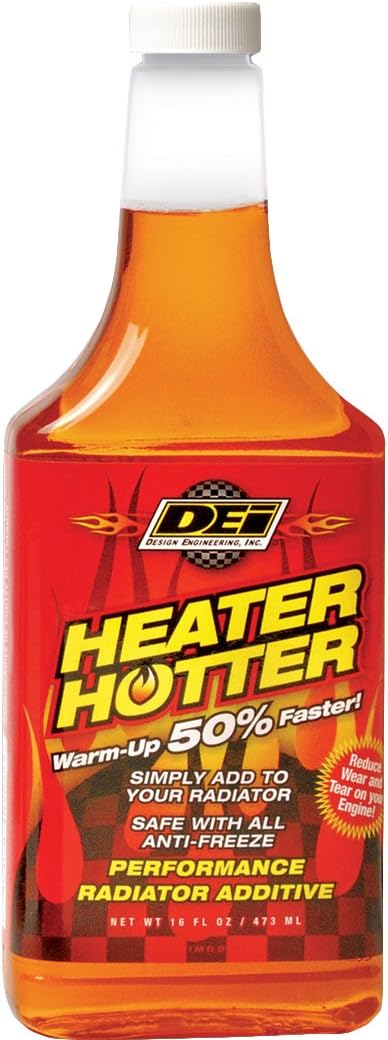We may earn revenue from the products available on this page and participate in affiliate programs. Learn more ›

Flushing your radiator once in a while is an essential part of overall vehicle maintenance. The radiator is the part of your car responsible for thermoregulation. When the radiator works properly, it’ll keep the engine cool while you drive so it won’t overheat, and you’ll get a smooth ride. However, if the radiator gets too gunked up by rust or debris, your ride will get the mechanical version of a fever. Too hot to touch, you’ll be standing by the side of the road with smoky steam emanating from your engine as you rue the day you forgot to use the radiator flush.
To help you, we have tracked down the best radiator flush solutions on the market. This breakdown details everything you need to know about finding the proper radiator flush: from how the chemicals strip away grime to what you need from a radiator flush, we’ve compiled the essentials right here.
Summary List
- Best Overall: Hy-Per Lube HFL400 Radiator Cleaner
- Best Value: Prestone AS107 Radiator Flush and Cleaner
- Most Powerful: Gunk Radiator Flush
Also Consider
Best Radiator Flushes: Reviews & Recommendations
Best Overall
Hy-Per Lube HFL400 Radiator Cleaner
Check Latest PriceBest Value
Prestone AS107 Radiator Flush and Cleaner
Check Latest PriceMost Powerful
Gunk Radiator Flush
Check Latest PriceHonorable Mention
Design Engineering Radiator Additive
Check Latest PriceHonorable Mention
BlueDevil Radiator Flush
Check Latest PriceOur Verdict on the Best Radiator Flushes
Now that you know what to look for in a radiator flush, you can keep your engine running smoothly. Perhaps you’ll use the Hy-Per Lube HFL400 Radiator Cleaner for its powerful performance. Or, maybe you’ll opt for the affordability of Prestone AS107 Radiator Flush and Cleaner.
FAQs
Yes, radiator flushes are essential. They are an inexpensive way to improve your vehicle performance. It rids the system of dirt, rust, and grime that builds up naturally over time. This debris can block up the radiator and compromise performance. Regular radiator flushes protect the heat-transfer system in your ride.
Some say you only need a radiator flush every five years or 100,000 miles. However, the more strain on the radiator, the more frequently you must clean it. Driving in hot environments or warming your engine in freezing temperatures, as well as frequent ascents and descents, causes radiator wear. More frequent flushes improve overall vehicle efficiency.
The minimum amount of time to run your engine with the flush is 10 minutes. That said, if you can, let the vehicle go for between three and six hours. Longer use allows it to more thoroughly flush out the system. Keep in mind that if the chemical solution is harsh, it can cause damage to the road. Sometimes, it’s better to idle the engine on jacks, especially if you’re in a state with heavy environmental protection laws.
If you’re going to a professional mechanic, you can expect to pay up to $150. However, if you do the work on your own, you can complete the flush for less than $50. Bear in mind that it is time-consuming, so be sure to schedule in a few hours to ensure the job is done right.
Once you have flushed your radiator, you should be able to tell if the clean water you are pumping through the system is coming out clear or muddled. If it is clear, it is a sign that the flush worked and there is no longer a blockage in your radiator, Otherwise, you may need to keep adding solution and flushing it out until there are no signs of debris.
This will depend on the severity of the blockage and the strength of the solution. Typically, it is best to let a liquid solution sit in your system throughout the day as you drive your normal routes. Then, flushing the fluid should only take a few minutes. If you are using a more concentrated powder like the IronTite, you will want to pay close attention to the directions because leaving it in too long could cause damage.
You will also need water to flush the solution out of your radiator after you have given it enough time to work. This can be done by pouring water into your radiator, but the easiest and most effective way would be to use a garden hose.
Depending on the car and how far you are driving, you should only need to flush your radiator once every year or two. However, if you notice your radiator seems to be working poorly or your vehicle frequently becomes overheated, it may be time to flush it.
Benefits of Radiator Flush
- Keep your cooling system running properly. Your coolant system can easily become clogged by scale, grease buildup, and other debris that gets into the system. Using the best cooling system flush for your radiator can help remove these obstacles to keep the system running properly.
- Help improve engine efficiency. Your radiator pumps coolant into your car’s engine, keeping it cool and preventing it from overheating. Without it, your engine would suffer and work much harder than it should. Radiator flush can help prevent debris from clogging your engine. Much like a person who has been running for a long time in heat needs their body to cool itself by sweating and pumping blood through your heart, your car’s engine needs its radiator to help keep it cool.
- Lengthen the life of your vehicle. Letting your car run for years and years without flushing your radiator can allow buildup and blockage to take place. By cleaning your clogged radiator, you can help lengthen the life of your car by keeping the engine and cooling system running clean.
Types of Radiator Flushes
Liquid Flush
Easily the most common type of radiator flush, liquid flushes are also the most intuitive category. Ideal for those new to radiator maintenance, some are concentrated while others require you to pour them in. Per the flush namesake, it works in conjunction with water to remove rust, corroded particulate, and oily residue. Usually, the active ingredient is sodium citrate, a buffer against acidic conditions. Many include moderate corrosives and catalysts to facilitate the chemical reaction.
Powder Solutions
Though they aren’t as prevalent, powder solutions offer a unique advantage: you can control the intensity. Yes, it takes an extra step and requires a bit more work, but you can control the dilution. Keep in mind that the powder can be challenging to manage without the proper equipment—it is harsh on the skin and, even worse, on the eyes. However, it is very powerful at stripping away greaseand rust. Plus, the shelf life is much longer on powder than it is with liquid solutions.
Pressure-Based
In addition to chemical formulas crafted to eliminate debris, there is another type: pressure-based. These radiator flushes use the force of air and water pressure to eliminate debris. It has the benefit of being gentle on hardware; and, unlike chemical approaches, won’t burn skin or harm eyes. You can find hose attachment wands that scrape debris out of the way. While these are best used in conjunction with occasional chemical flushes, you can use them more frequently than other types without damaging the radiator.
Key Features
Active Chemical and Intensity
The idea behind radiator flush is always the same: to eliminate caked-on grime and rusted particulate. However, not all chemical formulas are made alike. Depending on the active ingredient — and how much of it is present in the solution — it will cause a different effects. The most common ingredient is trisodium citrate. The citrate converts into citric acid when exposed to water, stripping away debris and interacting with residue from radiator fluid. Other versions of the chemical include sodium formate and sodium acetate. The more active chemical in the solution leads to more powerful rust removal, though it is more likely to damage the hardware. Be sure to check the specs on your radiator flush and familiarize yourself with its potency.
Application Method
Depending on the radiator flush you’re using, you may have to dilute it yourself. Alternatively, it will come as a pre-mix. There are unique benefits to each approach: powder and concentrated liquid options let you control the potency, but they carry a greater risk of harming your skin. Pre-mix is usually cheaper and less potent but far easier to use. However, because they are less powerful, you may have to repeat the process a couple of times. If you have the time to spare and want to save some dough, opt for a pre-mix. If you are looking to get rid of some serious rust damage, you should use a more powerful chemical.
Storage Container
It might not seem like a huge feature, but the container that holds onto your radiator flush plays a big role when it comes to efficiency. Especially if the flush will work more than once, the container must be thoroughly sealed to prevent exposure to air and avoid evaporation. Because the chemical reacts with metal, you will only find them in plastic containers. Opaque plastic is the best choice since light can impact chemical potency. If your flush comes in a clear container, it will lose some power every time it sees the sun. Use it soon after purchase to avoid any issues.
Other Considerations
- How long it takes. Think about how much time you’ll need to spend flushing your radiator. The more damage and build-up you’re facing, the longer it will take to get the job done. You can speed this up with a more potent solution used in conjunction with a pressure flush. If there’s not much damage, time won’t carry as much weight when considering your radiator flush options.
- Protection benefits. The more comprehensive the radiator flush, the longer the effects will last. Take a look at the extra benefits you can get from the solution, including removal of grease, deposits of oil, and rusted metal. Thorough cleaning will improve engine efficiency and let you flush the radiator less frequently.
- Vehicle compatibility. Make sure you can use your radiator flush with your vehicle. Consider the type of materials used in your radiator. Some flushes won’t work with nickel and can result in hardware damage. Others are more inert and won’t harm your radiator. Check your owners’ manual or look online to find out what your radiator system is made of, and make sure you pick a compatible flush.
- Environmental safety. Consider the practical aspects of the radiator flush. The chemical will drain out of your system, and it has to go somewhere. Eco-friendly solutions are safe on waterways and not prone to damaging flora. Otherwise, you’d have to contain the flushed fluid and dispose of it separately.
- Personal safety. Mixing chemicals can sometimes lead to spills. Because of the acidic nature of the radiator flush, be sure that you have a well-ventilated space, long sleeves, gloves, and goggles. Take a look at the active chemical used in the flush, and make sure you have a buffering agent to render it inert. Basic chemicals (like baking soda) help with acid burns while acids (like vinegar) counteract basic solutions.
Pricing
- Under $20: Radiator flush in this price range will usually be a liquid and often be fairly diluted. These flushes usually come in either 22 or 16-ounce containers and work for both corrosion and grime.
- Between $20 and $40: The vast majority of radiator flushes come in this range, with most powders and high-end fluid formulas falling in this category. The price reflects an increased quantity of active chemicals, making these better suited for serious radiator wear.
Tips
- Be responsible with your radiator flush since most aren’t very eco-friendly. Avoid protected wilderness areas and waterways used for swimming or drinking. When possible, contain and dispose of the flush solution.
- Always wear personal protective equipment (PPE) when doing a radiator flush. The formula uses corrosives and can’t contact skin or eyes — or be inhaled. Wear goggles, long sleeves, and do the flush in a ventilated area.
- Only use radiator flushes on radiators, especially if the formula is nickel sensitive. The active agent in radiator flush is built to work with metals like aluminum. Don’t apply it to other parts of your vehicle (even if they are rusty).
- Radiator care is a critical part of preventative maintenance. Check its status occasionally and, when you perform a radiator flush, keep a record of it.
- Radiator flush can void some warranties. If a protection plan covers your vehicle, check the underwriting before you tackle this project.
- Take your time when cleaning out your radiator. Properly executed radiator flushes can save you big down the line. Be sure to set aside enough time to do it right, lest you cause more damage to the system.
- Less can be more. Inherently, corrosives wear away at the metal. If you over-flush your radiator, it can damage the hardware. Should the chemical not work well enough, try blasting it with water. If the problems continue, consult a mechanic.
- Restore coolant levels after you flush out the radiator. Essential to proper function, it prevents you from damaging the radiator after stressing it out with cleaning. Always check your vehicle’s fluids as a part of routine maintenance.






